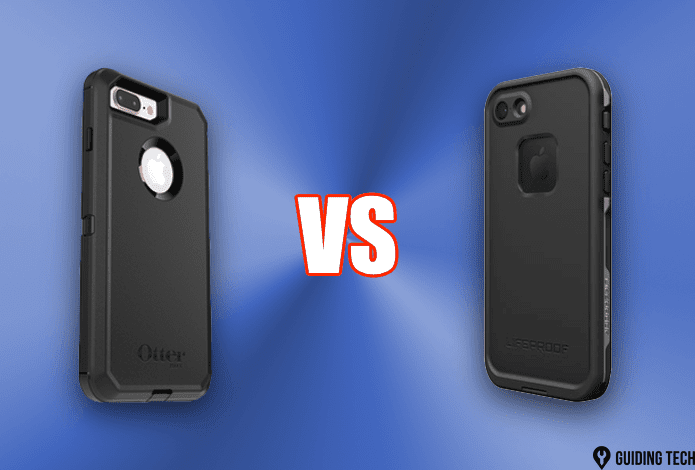With the Windows 10 November Update, Microsoft has added the Windows Defender Antivirus to Microsoft Defender Advanced Threat Protection for improved built-in security in the Windows 10 and later. However, the bigger question is why you want to turn off Windows Defender on Windows 10 computer? Should you really do it? Let’s begin.
1. Turn Off Windows Defender in Windows 10
There is no need to disable Windows Defender completely just because you want to install an app or make some system changes. You can simply disable the real-time protection component in Windows Defender and continue with the task at hand. Press Windows key+I to open Settings and search for Virus & threat protection. Click on Manage settings under Virus & threat protection settings. You can now turn off real-time protection here. That way, you don’t have to disable and remove Windows Defender completely. If you still want to do it, continue reading.
2. Run Windows Defender with Antivirus
Microsoft showed a lot of character when it updated Windows Defender to run alongside other antivirus apps. That wasn’t possible in earlier versions of Windows, but it is possible with Windows 10. I have Kaspersky running on my computer, but I also have Windows Defender switched on. I just don’t have real-time protection running. That allows me to run periodic scans with Windows Defender and still use another antivirus app. I get the best of both worlds.
3. Disable Windows Defender in Windows 10 with Group Policy Editor
Let’s get this done if you have already made up your mind and found a suitable replacement antivirus to protect your computer. Windows 10 Pro comes with Group Policy Editor that we will use to disable Windows Defender. But first, you need to disable Tamper Protection. Windows Home users should skip to the next point. Go to Settings > Virus & threat protection > Manage settings and scroll a little to find Tamper Protection option. Toggle it off. Search for Group Policy Editor in Windows Search and open it. Drill down to the below path. Double-click on Turn off Windows Defender Antivirus folder on the left-most pane to open it. Click on Enabled option, hit Apply and OK to disable Windows Defender. Yes, enable and not disable. That’s because the file name clearly states Turn off Windows Defender Antivirus. You may still see the Shield icon in the Taskbar, but that doesn’t mean Windows Defender is active. The same icon also represents the Windows Security app.
4. Disable Windows Defender in Windows 10 with Registry Editor
This is for Windows Home users who don’t have GPE on their system. Every Windows edition comes with a Registry Editor. Search for the same in the Start menu and open it. Disable Tamper Protection. See point 3 above on how. Navigate to the below registry path. You can also copy-paste it in the address field and hit Enter. Right-click on the Windows Defender folder in the left sidebar and select DWORD (32-bit) value to create a new entry. Name it DisableAntiSpyware. Double-click on the newly created DWORD file and change the Hexadecimal Value data to 1 from 0. Save everything and reboot your computer to complete the process.
Should You Disable Windows Defender
Yes and no. That’s not much of an answer, but let me explain. Why Use Windows Defender Windows Defender has turned into a solid antivirus app. It not only protects you from viruses but also zero-day and ransomware attacks. It will disallow critical changes to your system files and help recover data in case the ransomware attack is successful. As noted earlier, Defender now offers real-time protection and works in the background, is pretty fast, and works nicely with third-party antivirus apps. This brings me to the next point. Malware. It’s a whole different story, and irrespective of which antivirus app you are using, you need Malwarebytes to fight malware. I recommend a combination of Defender and Malwarebytes (paid version) to offer the best possible protection on your Windows 10 computer. Why Not Use Windows Defender Some advanced antivirus apps like Kaspersky come with additional features that traditional antivirus apps like Defender lack. Kaspersky comes with a VPN (costs extra) that will further help protect you by masking your identity and encrypt your internet connection. It also offers a password manager to store important passwords. However, third-party password managers are far superior and more recommended. Then there are parental controls if you have kids in the house. That will help protect your kids from adult content like porn, violence, abuse, and much more. Verdict Here is my opinion. AV Test gave Windows Defender full marks in protection and usability and only slightly less in performance. Windows Defender performs at par with some of the best antivirus apps out there. It gets a 100% rating in December 2019 which is slightly better than the industry average. You still need Malwarebytes irrespective of which antivirus app you use. Paying for two when Windows Defender is free makes no sense. As for additional features like a password manager and VPN are considered, they already cost extra even with antivirus products like Kaspersky. I recommend Dashlane that offers both of these for the price of one.
Defend the Innocent
You can turn off Windows Defender or disable it, but you shouldn’t. Here is the short version for those who skimmed the article. Use Defender with Malwarebytes and you are good. You need additional features, there are dedicated apps that are far better than what comes packaged with top antivirus apps. Windows Defender has turned into a formidable opponent and results show it only getting better. Next up: Windows Defender Antivirus arrived to replace the Microsoft Security Essentials. However, it is more than a replacement and you should totally read the next post to know why Windows Defender is important. The above article may contain affiliate links which help support Guiding Tech. However, it does not affect our editorial integrity. The content remains unbiased and authentic.





















